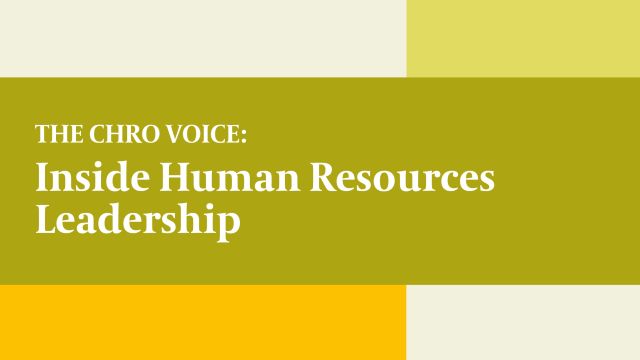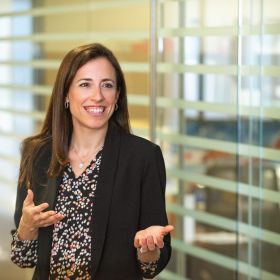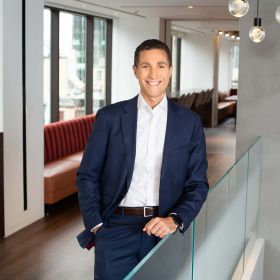We want to take in employees’ input and find ways for the HR organization to be seen as the ‘Department of Yes,’ instead of the ‘House of No,’ open to figuring out solutions that work for everyone.
 Cindy FiedelmanCHRO of Digital Realty
Cindy FiedelmanCHRO of Digital Realty
The role of the Chief Human Resources Officer has transformed dramatically, extending far beyond traditional HR functions.
We had the pleasure of sitting down with Cindy Fiedelman, CHRO of Digital Realty, to delve into the evolution of talent management, the impact of AI, and strategies for engaging a multigenerational workforce.
How has the approach to business planning and talent acquisition evolved in the past few years at Digital Realty?
As Digital Realty has grown and transitioned, we’ve had to usher in a new era of openness and creativity in how we think about retaining existing talent and bringing in new talent. It's not just about people who have the table stakes, traditional skills anymore; we're looking for strong athletes who can stretch and adapt to where the business needs to go in the future.
At the same time, we're more extensively leveraging human capital metrics to drive our business, from workforce planning to compensation levers that enhance performance and outcomes. We're moving beyond standard HR programs to a more dynamic approach to talent.
What are your biggest talent management priorities, and how are you addressing them?
Half of our workforce is in the data center, and we're committed to empowering these employees and leaders to grow their skills and lead independently. We've invested heavily in management development training, going back to traditional classroom-style learning with hands-on experiences, in addition to using online self-directed learning tools.
Another priority is ensuring that employees across the organization understand the key drivers of our business and what they mean in the work they do daily. To enable this, we've made metrics accessible through video formats and other communication tools which really removes a lot of friction and makes it easier to make these connections.
What strategies are you using to ensure that your pipeline of top talent remains engaged and developed?
There are a couple of key approaches we are taking. The data center industry is highly competitive, and the war for talent is fierce. We’ve had to open our aperture, looking for transferable skills that are relevant both today and tomorrow.
We're also drawing in people from outside the industry who can bring fresh perspectives. This requires significant investment in training to get them up to speed.
When it comes to current employees, we're focused on keeping their engagement high by giving them the option to work on cross-functional assignments, which allow them to experience other parts of the business.
We also listen to our employees through pulse surveys that help us understand their needs so we can develop and implement relevant actions. One theme we keep hearing is that flexibility is top of mind. And it’s not just about remote work versus working in the office—people want flexibility in how the work gets done. To that end, we're committed to providing a work environment that balances accountability with flexibility.
How have the board’s expectations of Human Resources changed over the last five years?
We've doubled in size over the past five years, thanks to a major acquisition, so the board's focus is on how this growth is being managed and how we’re integrating and developing talent, especially in our APAC regions which are growing in different ways. For example, in one part of Asia, we're developing new landscapes through joint ventures while expanding existing ones in another.
Another constant focus of the board is the shifting talent landscape. Our needs have evolved beyond traditional areas like real estate and finance to include technology and infrastructure, and we need to keep adapting to key industry trends to stay ahead.
This also carries over to succession planning not just for the CEO but for all C-level executives. When I first joined the company, we developed a structured approach to succession planning. Since then, we review succession plans annually with the board, focusing on the CEO and their direct reports. Over time, we've expanded our succession planning efforts to include our top 100 leaders across the company. We share updates with our board regularly, discussing the internal leaders we have ready to step into new roles, and in some cases whether we will need to look outside. It's a rigorous process, and it's essential for our growth.
HR leaders are exploring AI technology to enhance operations, but some feel stuck after the initial implementation. How are you advancing AI in your strategy?
AI is one of my top five priorities. We are just scratching the surface now, using basic tools like Copilot and ChatGPT, but there's much more to explore. We've had to first focus on integrating our systems post-acquisition to establish a solid data baseline before piling on more tools.
We're also staying creative with recognition tools, self-service benefits, and automation to enhance employee engagement. There's still a lot of opportunity for us to take advantage of more AI technology out there.
As you talk to your colleagues and peers, do you think AI should play a more significant role across the broader business or more of a supporting role?
We’re still in the earlier stages of exploring the full range of ways AI could integrate more into the business so it’s hard to tell, but in some ways not being a first-mover has had advantages. Some of the early adopters have had to go back and validate their AI tools to ensure accuracy. Now that these tools are more tested, we can focus on finding the most effective applications.
So far, we have seen AI can be valuable for resume screening and talent acquisition basics, but true employee development still requires human interaction. Meeting people in person goes a long way in building relationships.
Cindy FiedelmanCHRO of Digital Realty
How do you manage the expectations and input of multiple generations in your workforce? How does this affect workplace culture?
Like most companies today, we employ every generation, and we want to meet the needs of all of them in our workforce. This ranges from employee benefits that cater to different career stages to providing various tools for getting work done. We want to take in employees’ input and find ways for the HR organization to be seen as the “Department of Yes,” instead of the “House of No,” open to figuring out solutions that work for everyone.
One example is the ask for increased flexibility, as I mentioned earlier. We have a dispersed, global workforce, which requires engagement at different times and in different formats. In wanting to be the “Department of Yes,” we came up with clear guidelines, boundaries and deliverables and then enabled employees to get their work done at different times of the days and different days of the week. And so far, it’s worked out quite well in terms of both employee engagement and productivity.











